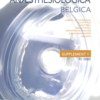Perioperative fluid management in major surgery
Fluid therapy, early goal- directed therapy, colloids, crystalloid solutions
Published online: Mar 21 2023
Abstract
Background: Perioperative fluid management has been a topic of discussion in the past years. Especially the amount of fluid administered and the type of fluid used are subjects of an ongoing debate.
Objective: Our objective was to evaluate the optimal fluid therapy for major surgery. We investigated which type and amount of fluid was the best to reach this goal.
Methods: A literature search was conducted using PudMed (Medline) and Cochrane databases. Also, guidelines of several organizations were consulted, notably the European Society of Anaesthesiology (ESA), the American Society of Anesthesiologists (ASA) and the Enhanced Recovery After Surgery Society (ERAS Society).
Results: The results of this narrative review provide an overview of the findings of the several reviews and trials that were withheld after performing a literature search. Sufficient evidence advocates the wide use of goal- directed therapy. Restrictive fluid therapy can be useful if perioperative risk is low. There is not sufficient evidence favoring one fluid type to another considering volume therapy.
Conclusions: The goal- directed approach has demonstrated to be of great importance in major surgery. It has proved to be the most complete and widely applicable form of fluid therapy. In addition, in major surgery, a restrictive approach could be considered if the perioperative risk is low. Avoiding a too restrictive approach can prevent adverse effects. The choice of fluid is of minor importance compared to the choice of fluid policy.
